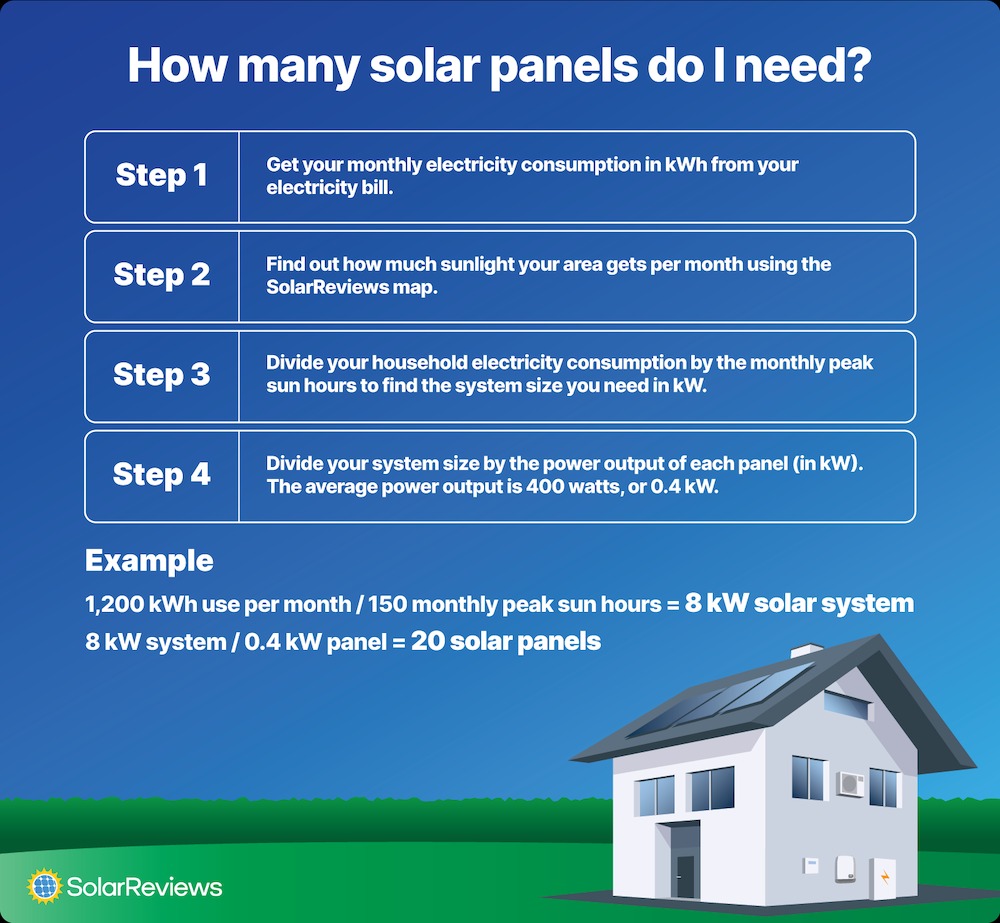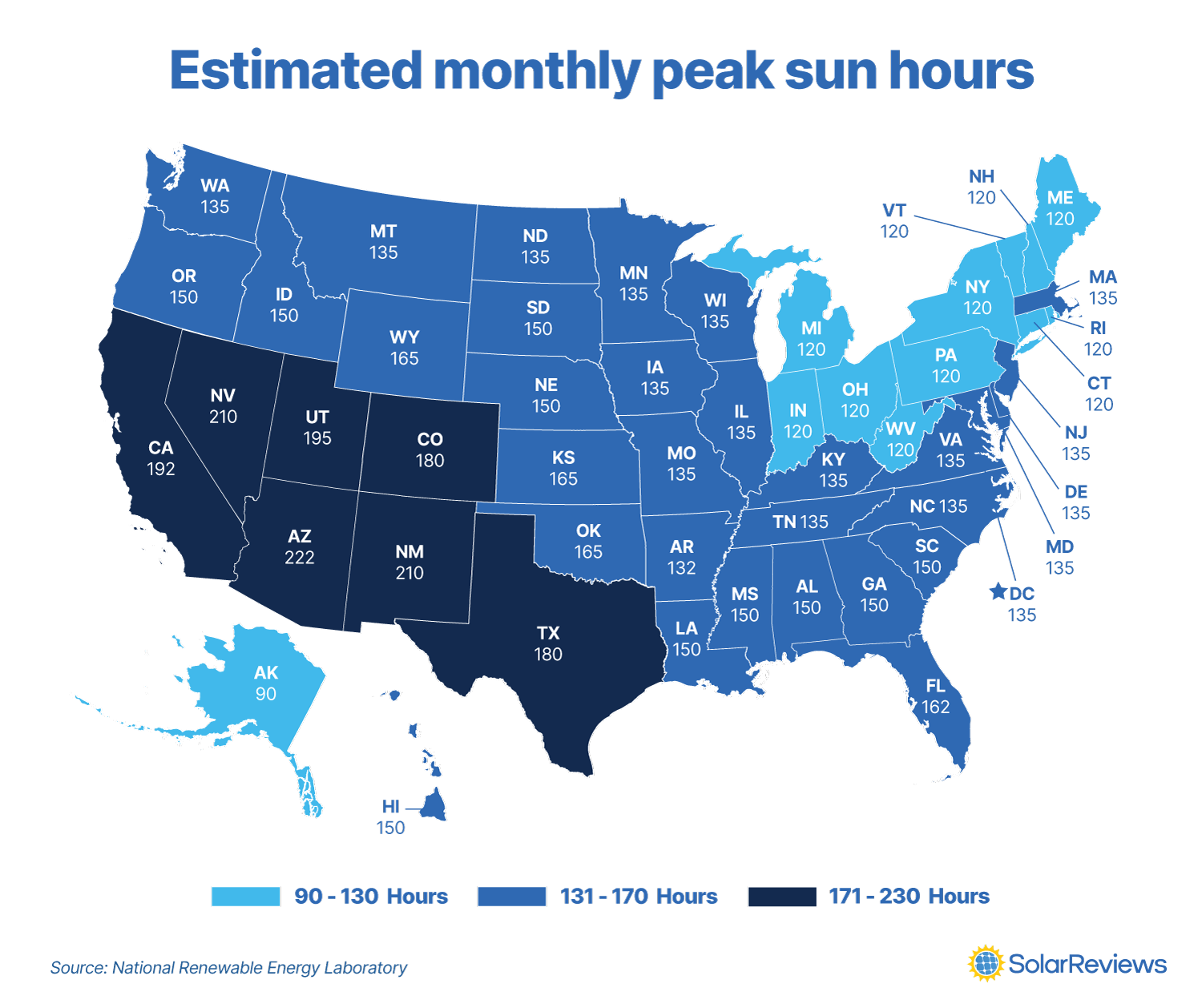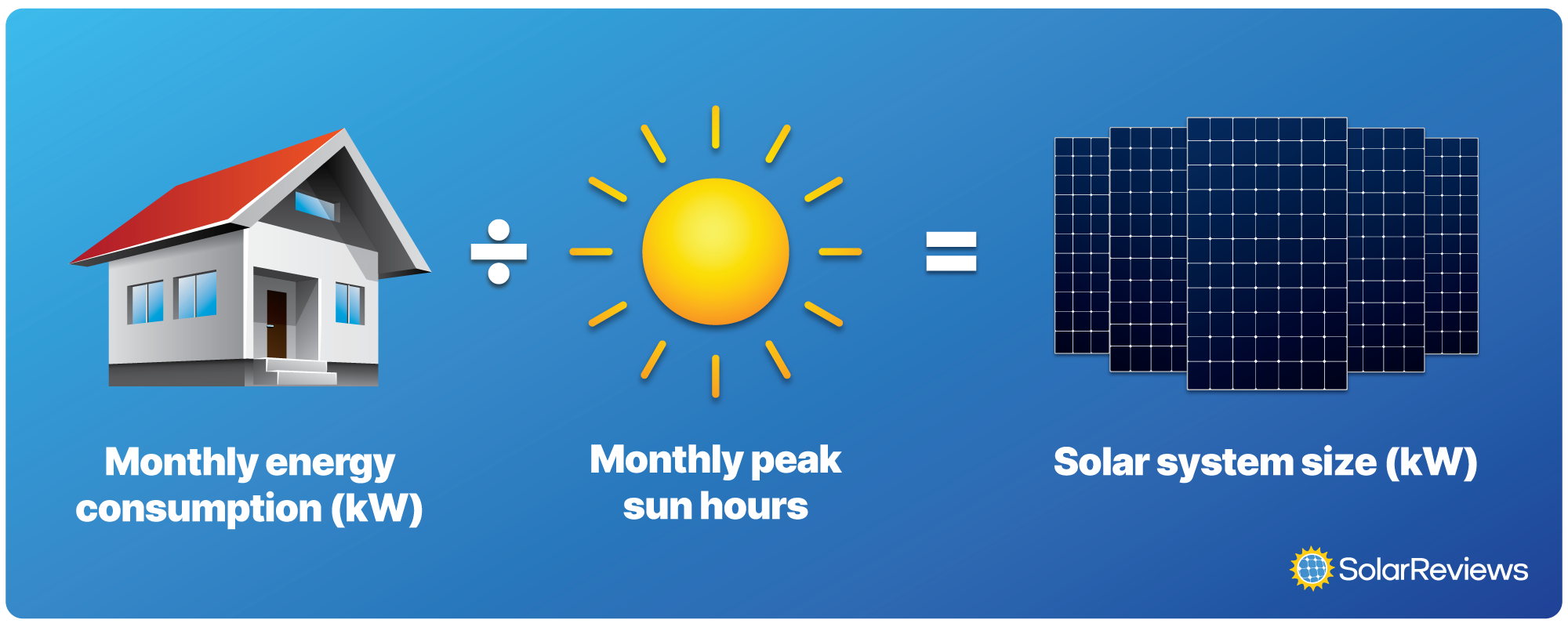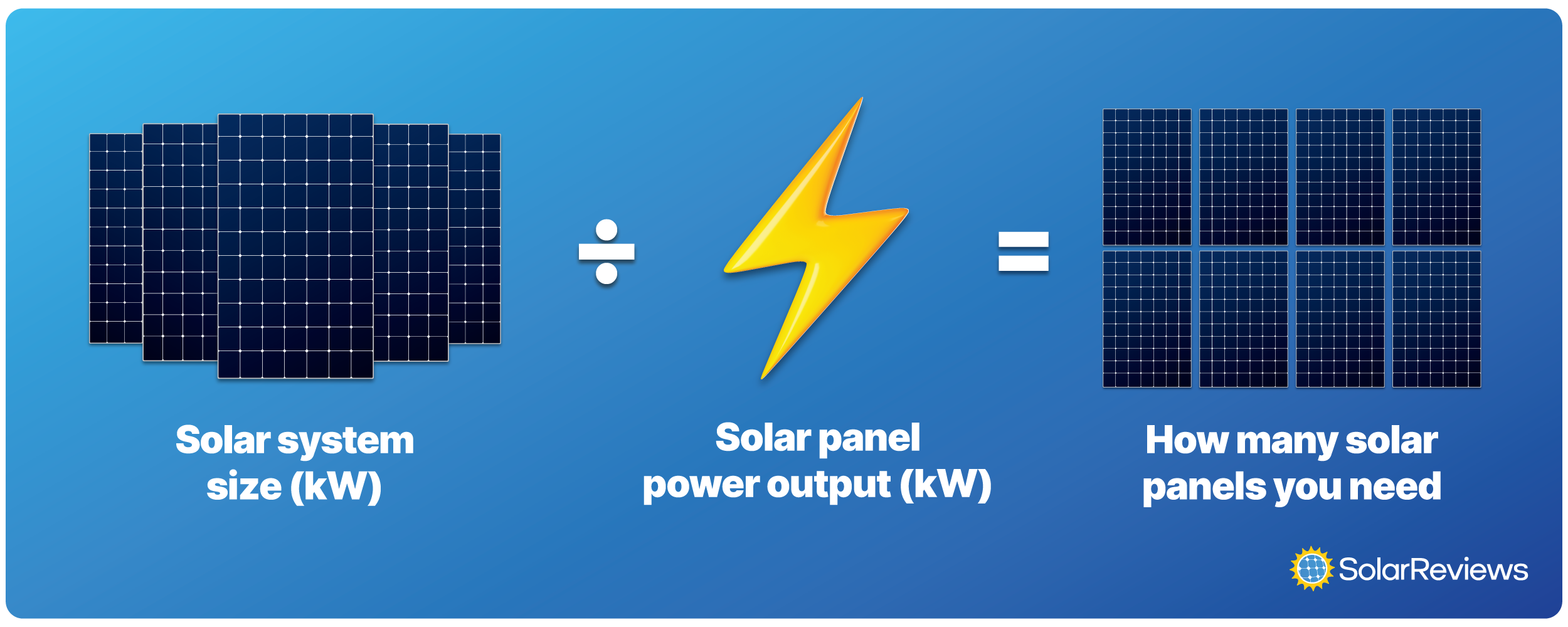How Many Solar Panels Do You Need? | Comprehensive Solar Calculator
由 JiangDavid 在 发布
Key takeaways
-
The average home needs between 15 and 19 solar panels to cover its daily electric usage.
-
You can calculate the number of solar panels you will need with your energy usage, the amount of sunlight you get, and the wattage of the solar panels you choose.
-
The formula for calculating how many solar panels you need = (Monthly energy usage ÷ Monthly peak sun hours) ÷ Solar panel output
-
The exact amount of solar panels needed for your home can vary with the characteristics of your roof, environmental factors, your local climate, your budget, your personal energy needs, and the size of your home.
Most homeowners need between 15 and 19 solar panels to cover their power needs. But how do you calculate the number of panels necessary to run your specific home? Solar expert Ben Zientara breaks down the calculations in the video below, or you can read on to find out how to estimate the amount of solar panels that are right for you.
Step-by-step guide: how to calculate how many solar panels you need
You can get an estimate of how many solar panels you need by using the following formula:
(Monthly energy usage (kWh) ÷ Monthly peak sun hours) ÷ Solar panel output (kW)

Let’s take a closer look at where you can find this information and how to use it to determine what solar system size is right for you in four easy steps!
Step 1: Find out how much electricity you use
Check your most recent power bill to see your monthly electricity consumption. The total amount of electricity used is usually shown at the bottom of the bill in kilowatt-hours (kWh).
Your electricity usage is the biggest deciding factor in how many solar panels you need. If you use a lot of electricity, you’ll need more panels to cover the costs!
According to the U.S. Energy Information Administration, an average home in America uses about 886 kWh of electricity each month. That’s a monthly electric bill of about $135.
Remember that electricity usage can vary widely depending on your home, your habits, and where you live, so it’s essential to check your electricity bills to get the most accurate estimate possible!
Expert tip! Annual home electricity usage will give a more accurate estimate. If you have access to your electricity bills from the last 12 months, you can better understand how many solar panels you’ll need. Electricity usage varies significantly from month to month (think about cranking the AC in the summertime), so your most recent bill might not reflect your all-time-high electricity usage.
Step 2: See how much sunlight your home gets
The amount of sunshine that hits your roof also plays a vital role in how many solar panels you need. Solar energy production is higher in sunnier states, meaning you’ll need to install fewer solar panels than those in overcast states.
How much sunlight an area gets is measured in peak sun hours. Sunny states like Arizona can get up to 210 peak sun hours monthly, while somewhere with more cloudy days, like Alaska, will only get 90 peak sun hours a month. The following map outlines the estimated monthly peak sun hours each state receives.

Step 3: Determine what solar panel system size you need
Now that you know your electricity usage and sun exposure, you can calculate the size of the solar system you need in kilowatts (kW). Simply divide your household electricity consumption by the monthly peak sun hours to find the right system size for your home.

Step 4: Calculate how many solar panels you need
Finally, you can divide the system size by the power output of a solar panel to find out how many solar panels you need. The higher a solar panel’s power output, the fewer panels you need to install.

Most solar panels produce about 2 kWh of energy per day and have a wattage of around 400 watts (0.4 kW).
If you’re interested in a specific solar panel model, you can find its wattage on its datasheet, where it will usually be labeled as maximum power, rated power, nominal power, or “Pmax”.
Remember, for this calculation, you need to convert a panel’s power rating from watts to kilowatts by dividing the wattage by 1,000.
Example: Calculating how many solar panels you need
Why SolarReviews doesn’t use production ratio. You may have come across the idea of a production ratio on other websites. A solar production ratio assumes that you know the amount of energy a solar system generates and the total wattage of the system. If you already have this information, there are easier ways to calculate how many solar panels you need. Our formula doesn’t require you to have any specific details about the solar installation you’re trying to calculate for - it’s all based on information about your home and location.
Factors that determine how many solar panels you need
Many things can impact the right number of solar panels for you, from your energy habits and roof characteristics to environmental factors and your personal solar goals and budget.
Electricity usage
How much electricity you use has the biggest impact on how many solar panels you need. If you use a lot of electricity, you’ll need a lot of solar panels!
There are plenty of factors that impact your energy use. Energy consumption can vary with the size of your family, how energy-efficient your home is, the appliances you use, and the state you live in.
For example, a home with an electric stove, water heater, and clothes dryer will have a higher electricity bill than a home with gas appliances! Homes that utilize smart thermostats or have energy-efficient appliances may use less energy.
Install more solar panels to prepare for future electricity usage. Some homeowners oversee their solar panel installation to cover their future needs, like electrifying their home or purchasing an electric vehicle. Charging an electric car like a Tesla requires just five additional solar panels. Check with your utility to see if there are solar installation size limits.
Solar panel wattage
Higher-wattage solar panels can produce more energy than lower-wattage solar panels. So, if you opt for a high-wattage panel, you can install fewer! The following table outlines how many solar panels you would need to cover an average household’s electricity usage, depending on the wattage of the panel:
|
Panel wattage |
Panels needed for average electric usage |
|---|---|
|
250 watts |
26 |
|
300 watts |
22 |
|
350 watts |
19 |
|
400 watts |
17 |
|
450 watts |
15 |
Disclaimer! 250-watt solar panels are rarely used in new rooftop solar installations in 2024. You'll want to look for solar panels with a higher output to cover your basic electricity needs. 250 and 300-watt solar panels are useful in smaller-scale solar projects. Popular solar panel sizes are between 400 and 430 watts.
Sun exposure and climate
Solar panels need sunlight to generate electricity. If you live somewhere with lots of sunshine, you can install fewer solar panels to cover your electricity bills.
For example, one 400-watt solar panel in Arizona can produce almost 90 kWh of electricity in one month. That same panel could only generate 36 kWh in Alaska.
Shading
If your panels get shaded at any point of the day, they will produce less electricity. Depending on the design of your solar system, shading one panel could impact an entire string of them!
So, you may need to install a few more panels on a shady roof or cut down overhanging trees to ensure your solar panel system can produce the most electricity possible.
Roof angle and direction
Solar panels operate best on south-facing roofs at an angle between 30 and 45 degrees. This orientation maximizes the amount of sun exposure panels can get.
If your roof faces north, you can still install solar, but the panels will generate less energy. Solar panels on north-facing roofs produce about 30% less electricity than those installed on south-facing roofs. So, if you install solar on the north side of your roof, you’ll probably need to install more panels.
Roof size
The size of your roof may limit how many solar panels you can install. A typical solar installation will need a minimum of 335 square feet of suitable roof space. For reference, an average roof is 1,700 square feet.
If your roof can’t fit all the solar panels you need - that’s okay! You can install fewer panels that do fit on your roof, but the system will only cover a portion of your electricity needs. Those with smaller roofs, like a tiny home with solar panels, for example, should also consider high-efficiency solar panels, which can generate more electricity in a smaller space.
The following table outlines how much roof space is needed for different amounts of solar panels:
|
Number of panels |
System size* |
Minimum roof space required |
|---|---|---|
|
10 |
4 kW |
177 square feet |
|
15 |
6 kW |
265 square feet |
|
20 |
8 kW |
353 square feet |
|
25 |
10 kW |
442 square feet |
|
30 |
12 kW |
530 square feet |
*Assumes 400-watt panels
Roof characteristics
Some roofs have obstructions, such as chimneys, vents, dormers, or skylights, that can limit the number of solar panels that can be installed. If you have any of these features on your roof, it may complicate your solar system design and reduce the number of panels that can be installed.
Solar panel cost and budget considerations
A typical solar panel system costs about $20,000 before any incentives are considered. Once the solar tax credit is taken into account, the cost of solar drops to $14,000. The upfront cost of solar panels might not be in your budget, but there are some options if you need a cheaper solar panel system.
One option is to install fewer solar panels and only cover a portion of your electricity bills. While you won’t eliminate all of your energy bills, you can cut down a decent chunk. There may also be solar incentives and rebates in your area that bring solar panel prices down!
You can also finance solar panels, which eliminates the burden of upfront costs, and instead allows you to pay for solar through monthly payments that better suit your lifestyle.
Utility rules and regulations
Powering your home with solar panels requires working with your utility company to ensure that the panels are working safely and that you are getting compensated for the energy you use.
Every utility company bills solar customers differently, which can impact the number of solar panels you should install.
For instance, some companies may not provide full credit for excess solar power produced beyond your monthly energy consumption. In such cases, it's best to install just enough panels to cover your monthly energy usage to avoid overpaying for a larger installation that won't be fully compensated.
Many utilities have restrictions on the size of a solar panel system. In some areas, the size of solar installations may be limited based on the grid infrastructure, while in others, utilities may restrict oversizing the system beyond a certain percentage of typical energy usage.
Personal solar energy goals
What you want out of going solar can also affect the number of panels you need to install.
Is your goal to reduce your carbon footprint? Then you’ll want to install as much solar as possible and consider pairing the system with solar battery storage to use the most clean energy possible. Maybe you want to maximize your electricity bill savings. If that’s the case, you’ll want a system that produces as much energy as possible to lower your utility costs.
You could also want to get the best return on your solar investment. Then, you’ll have to weigh the upfront cost of solar and compare it to the savings you can get with the net metering policies available to you, which might not mean installing as many solar panels as you can.
No matter your goals, a reputable solar professional can help you get the system that’s just right for you.
Professional solar calculators can take these factors into account. The SolarReviews calculator and the PVWatts calculator offered by The National Renewable Energy Laboratory (NREL) can provide you with accurate estimates of how many solar panels to install on your roof.
